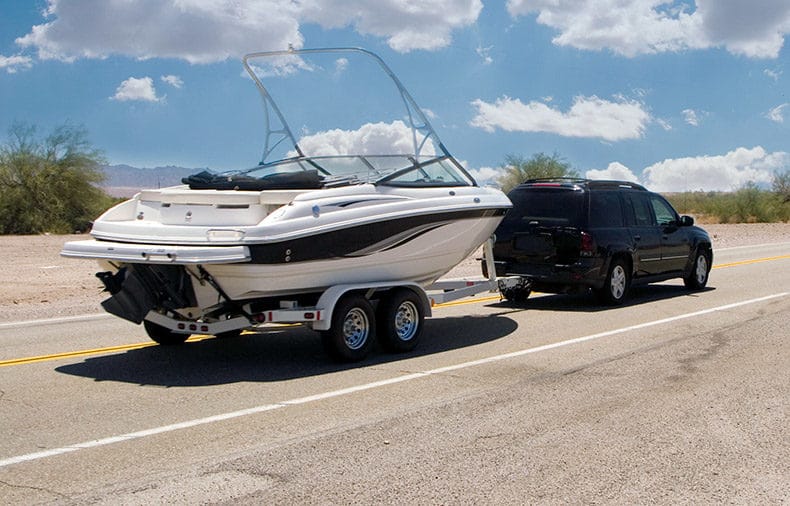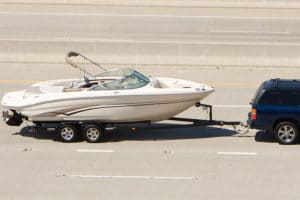A boat trailer can be difficult to navigate, especially the first few times you move it. Consider the type of terrain you will be navigating, the weight of your personal vehicle, and your personal comfort. Check your vehicle’s GCVW (gross combined vehicle weight). This is the combined weight of your car, your boat, and the trailer it’s on. Every vehicle has its own GCVW, so be sure not to exceed this limit.
First, you’ll want to make sure you have all the parts you may need, typically known as a ‘tow package.’ While each towing package varies, it could include:
- Hitch platform and trailer towing wiring harness
- More powerful engine, transmission, brakes, and frame
- Electrical and cooling systems to handle heavy loads
- Upgraded battery alternator, and charging system wiring
- Towing-capable circuitry added to the electronic control module
- Upgrades to the rear-end (differential) gearing to make towing easier
- Upgraded shocks and brakes to handle GCVW
Towing Hitches and Tongue Weight
Hitches are rated by class. The hitch class you need depends on how much your trailer and boat weigh. Keep in mind, accessories like weight-distributing hitches can change the capacity.
- Class I: Under 2,000 pounds
- Class II: Up to 3,500 pounds
- Class III: Up to 5,000 pounds
- Class IV: Up to 12,000 pounds
- Class V: Up to 18,000 pounds
The amount of weight bearing down on the tongue of the trailer also has an effect. Tongue weight should be between 10 and 15 percent of the total GTW (gross towing weight). If it exceeds this percentage, trailer sway is a possibility.
How to Hitch Your Boat Trailer to Your Vehicle
- Align the hitch and ball. Lower trailer hitch onto the ball.
- Close the latch and insert the safety pin. Without the safety pin, the trailer could pop off the ball in transit.
- Cross the safety chains, and attach them to the vehicle. Always keep them crossed in case the hitch fails so they can support the trailer tongue.
- In the event your trailer has brakes, attach the safety line to the tow vehicle.
- Plug in the lights and test them to make sure they’re working.
Safely Move Your Boat on Your Trailer
First step, before you even trailer, perform a safety inspection of your vehicle. Double check your tongue weight. Remember, if it’s over 10 to 15 percent of your load, you can experience swaying. If you feel swaying while trailering, slow down immediately, pull over, and adjust your boat. Be sure to make wide turns to avoid clipping or jumping curbs. Leave more space than usual between you and the vehicle in front of you as braking is more difficult when trailering a boat. If wind sways your trailer or vehicle, take your foot off the accelerator, but avoid braking. Do not remove the winch strap or safety chains until you have got the boat into the water. Otherwise, the boat can slide off the trailer. Finally, practice makes perfect. Be patient and give yourself some extra time loading, driving, and unloading your boat.




